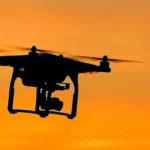TinEye is a pioneering reverse image search engine that has gained considerable recognition for its ability to find and track images across the internet. Launched by Idée Inc., a Toronto-based company specializing in image recognition technologies, TinEye has been instrumental in revolutionizing how users search for images online. This article delves into what TinEye is designed for, its key features, and the limitations that users should be aware of when using the service.
What is TinEye Designed For?
TinEye is designed primarily for reverse image searching, a process that involves uploading an image or providing an image URL to find where that image appears on the internet. Unlike traditional search engines that rely on keywords, TinEye analyzes the content of the image itself to locate exact matches, variations, and sources.
Key Features and Use Cases
- Image Attribution: One of TinEye’s most popular uses is identifying the original source of an image. This is particularly useful for journalists, content creators, and researchers who need to credit the correct source or verify the authenticity of an image.
- Finding Higher Resolution Versions: TinEye can be used to find higher-resolution versions of a specific image. This is valuable for designers and publishers who require images of superior quality for their projects.
- Detecting Unauthorized Use: TinEye helps photographers, artists, and copyright holders to track where their images are being used across the web. This functionality is crucial in combating image theft and ensuring that images are not used without proper licensing or permission.
- Tracking Image Modifications: TinEye’s algorithm is capable of identifying edited or modified versions of an image. This feature is useful for detecting whether an image has been altered, which can be critical in contexts where image integrity is important.
- Visual Search Technology: The core of TinEye’s technology is based on sophisticated visual search algorithms that analyze the patterns, colors, textures, and other visual elements of an image. These algorithms are designed to match an uploaded image with its counterparts in TinEye’s extensive database.
How TinEye Works
TinEye’s process is straightforward. When a user uploads an image or provides a URL, the platform converts the image into a unique digital signature or “fingerprint” using its proprietary algorithm. This fingerprint is then compared against the billions of images in TinEye’s database to find matches. The results are presented in order of similarity, showing exact matches, closely related images, and instances where the image has been altered or cropped.
Integration and API
TinEye offers an API (Application Programming Interface) that allows developers to integrate its reverse image search capabilities into their own applications. This feature is particularly beneficial for businesses that need to incorporate image recognition technology into their workflows, such as e-commerce platforms that use it to prevent the unauthorized use of product images.
Limitations of TinEye
While TinEye is a powerful tool, it has certain limitations that users should be mindful of:
- Database Size and Coverage: TinEye’s search results are limited to the images stored in its database, which, although extensive, does not cover the entire internet. As a result, there may be instances where TinEye is unable to find a match, especially if the image is new or from a less prominent source.
- Limited to Publicly Available Images: TinEye can only search for images that are publicly accessible on the web. It cannot search within private databases, social media accounts with restricted access, or content behind paywalls.
- No Metadata Search: Unlike some image search engines that can analyze metadata (such as EXIF data) embedded in images, TinEye focuses solely on the visual content of the image. This means it may miss matches where the image’s visual appearance has changed significantly but the metadata remains the same.
- Inability to Identify Context: TinEye excels at finding exact or visually similar images, but it does not provide context for how or why an image is being used. For example, it cannot differentiate between a legitimate use of an image and one that violates copyright, leaving users to make those judgments.
- Does Not Work with Non-Image Content: TinEye is specifically designed for images and does not work with video or text-based content. Users looking to reverse search videos or other multimedia files will need to seek alternative tools.
- User Interface and Usability: While functional, TinEye’s user interface is relatively basic compared to other image search engines like Google Images. It lacks some advanced features, such as filtering by date or file type, which can make it less flexible for complex searches.
- Dependence on Image Quality: The accuracy of TinEye’s search results can be affected by the quality of the uploaded image. Low-resolution or highly compressed images may produce less accurate results, as the algorithm relies on clear visual details to generate an effective match.
While TinEye is designed for legitimate purposes, like image attribution and copyright protection, it can also be exploited for malicious activities. Below are some potential malicious uses of TinEye:
1. Doxxing and Privacy Invasion
- Stalking and Harassment: Malicious actors can use TinEye to track down the online presence of individuals by reverse-searching their photos. This can lead to the identification of personal information, social media accounts, and other private details, which could be used for harassment or stalking.
- Exposing Anonymous Identities: TinEye could be used to discover the true identity of individuals who are trying to remain anonymous online. By tracking down all instances of an image, attackers might link a pseudonymous online presence to a real identity, leading to doxxing (the malicious act of publishing private or identifying information about an individual).
2. Facilitating Phishing and Social Engineering
- Creating Fake Profiles: Attackers can use TinEye to find high-quality images of individuals for use in creating fake profiles on social media, dating sites, or professional networks. These fake profiles can then be used for phishing, social engineering, or scams.
- Targeting Specific Individuals: By using TinEye to gather images of a specific person across different platforms, attackers can compile a dossier that helps them craft highly personalized phishing emails or social engineering attacks, making them more convincing and difficult to detect.
3. Intellectual Property Theft
- Locating High-Value Images for Unlicensed Use: Some malicious users may employ TinEye to find high-resolution versions of images for unlicensed commercial use. This is particularly concerning for photographers, designers, and artists who rely on their work for income. Once an image is located, it can be stolen and used without permission, depriving the original creator of rightful compensation.
4. Facilitating Cyberbullying
- Circulating Modified Images: TinEye’s ability to track down modified versions of an image can be exploited to find and disseminate embarrassing or harmful altered images of individuals. For example, a malicious user might locate photoshopped images that depict someone in a negative or humiliating light and spread them online to bully or defame the person.
5. Compromising Security and Anonymity of Whistleblowers
- Tracing Whistleblowers: In authoritarian regimes or organizations with a history of retaliating against whistleblowers, TinEye could be misused to track down images associated with anonymous whistleblowers. If their photos are matched with images elsewhere on the internet, their identities could be exposed, putting them at serious risk.
6. Misuse in Competitive Intelligence
- Corporate Espionage: Competitors might use TinEye to track down images of proprietary designs, products, or prototypes that have been leaked or inadvertently shared online. This can provide them with insights into a company’s strategies or upcoming products, potentially giving them an unfair advantage in the marketplace.
7. Facilitating Fake News and Misinformation
- Misleading Contextual Use of Images: Malicious actors can use TinEye to find images that match the narrative they want to push, even if the image is taken out of context. For example, they could use an image from one event and claim it is from another, spreading misinformation or inciting panic.
8. Exploiting Vulnerabilities in Image Recognition
- De-anonymizing Users on Image-Driven Platforms: On platforms where users share images anonymously, such as forums or certain social media sites, attackers could use TinEye to reverse-search those images and link them to non-anonymous profiles elsewhere, thereby compromising the user’s anonymity.
9. Aiding in Revenge Porn
- Tracking Down and Distributing Private Images: TinEye could be used to find and distribute private images of individuals, especially in cases of revenge porn. Malicious users might track down private images that have been shared without consent and spread them further, exacerbating the victim’s distress.
10. Locating Vulnerabilities in Digital Watermarking
- Circumventing Watermarks: Some users might use TinEye to locate multiple versions of an image in an attempt to find one without a watermark or with a watermark that is easier to remove. This could allow them to steal and use the image without proper attribution.











